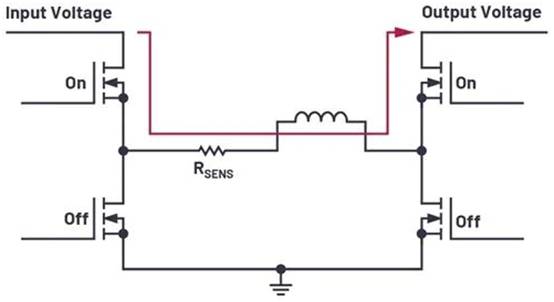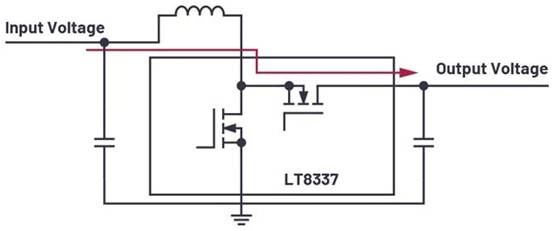Using a voltage regulator to achieve direct operation
Time:2023-12-22
Views:350
This article introduces how to equip PassThru when the input voltage of the circuit is too high or too low to supply power to the load ™ How does the special converter of the (direct) mode work. This article will illustrate through examples how to use step-down and step-up regulators equipped with direct mode to improve power supply efficiency and EMC performance.



In some applications, the existing power supply voltage can directly drive the load without the need for additional voltage converters. Sometimes, when the operation status is abnormal, the power supply voltage may be too high or too low to directly supply power to the load. In these cases, special voltage converters optimized for this operation can be used. For example, an industrial 24V system is such an application. We assume that the load requires a 24V power supply voltage, but the available 24V input voltage sometimes rises to 38 V or drops to 15 V, exceeding the allowable power supply voltage range of the load. For these applications, typical boost regulators or buck boost regulators can be used.
The schematic diagram of this type of application is shown in Figure 1. Portable radio devices are powered by batteries. The load can accept voltage between 10 V and 14 V, but the output range of the voltage source may be 8 V to 16 V. So the interpolated step-down voltage regulator can convert the voltage to 12 V at the output end. If the power supply voltage is slightly lower than 12 V, the converter operates in step-up mode. If the power supply voltage is higher than 12 V, it operates in step-down mode.

Figure 1. The allowable voltage range of the load in the system is smaller than the possible voltage range of the power supply.
Using Direct Mode for Improvement
The system shown in Figure 1 runs well, but there is still room for improvement. If the voltage of the voltage source can directly supply power to the load for most of the time, then a step-down step-up regulator can be used in direct mode. At this point, within the input voltage range defined by the power supply designer, the input voltage will be directly transmitted to the output terminal of the step-down voltage regulator. The advantage of this operation is that it does not generate any form of switching loss and the circuit efficiency is very high. In addition, due to the absence of current pulses in this operating mode, the electromagnetic radiation generated during circuit operation is extremely low.
Figure 2 shows the power stage of the new LT8210 buck boost controller circuit equipped with a through mode. In this mode, the two high-end switches of the H-bridge are permanently open and the two low-end switches are permanently closed. Through this approach, almost 100% efficiency can be achieved based on current and voltage conditions.

Figure 2. LT8210 step-down/step-up regulator equipped with direct mode, used to transfer voltage in standard operation.
In addition to the step-down step-up solution (LT8210), the step-up regulator also supports direct mode. ADI‘s newly launched LT8337 Silent Switch ® The boost voltage regulator itself integrates direct mode. Figure 3 shows the concept behind the LT8337 boost converter. When the through mode is enabled, the high-end switch is permanently open and the low-end switch is permanently closed.
Figure 3. The LT8337 boost regulator using Silent Switch technology also provides a through mode.
In boost voltage regulators, high-end switches are typically executed through flyback diodes. In this way, the voltage of the voltage regulator added above the set output voltage will automatically pass through the inductor and flyback diode. However, the dedicated through mode can effectively reduce the voltage drop of the diode by actively activating the high-end MOSFET. Direct mode is also responsible for disabling all unnecessary functions of LT8337. Therefore, the current consumption of the IC itself may only reach 15 µ A. This is particularly effective for battery powered applications.
Summary
Direct mode can improve power efficiency and improve EMC performance. For applications where the available power supply voltage is typically within the allowable voltage range of the load, the benefits of these advantages are particularly evident. However, users must also be aware that in through mode, output voltage regulation will not occur within the defined voltage threshold range, although this regulation is not necessary in many applications.
|
Disclaimer: This article is transferred from other platforms and does not represent the views and positions of this site. If there is any infringement or objection, please contact us to delete it. thank you! |











